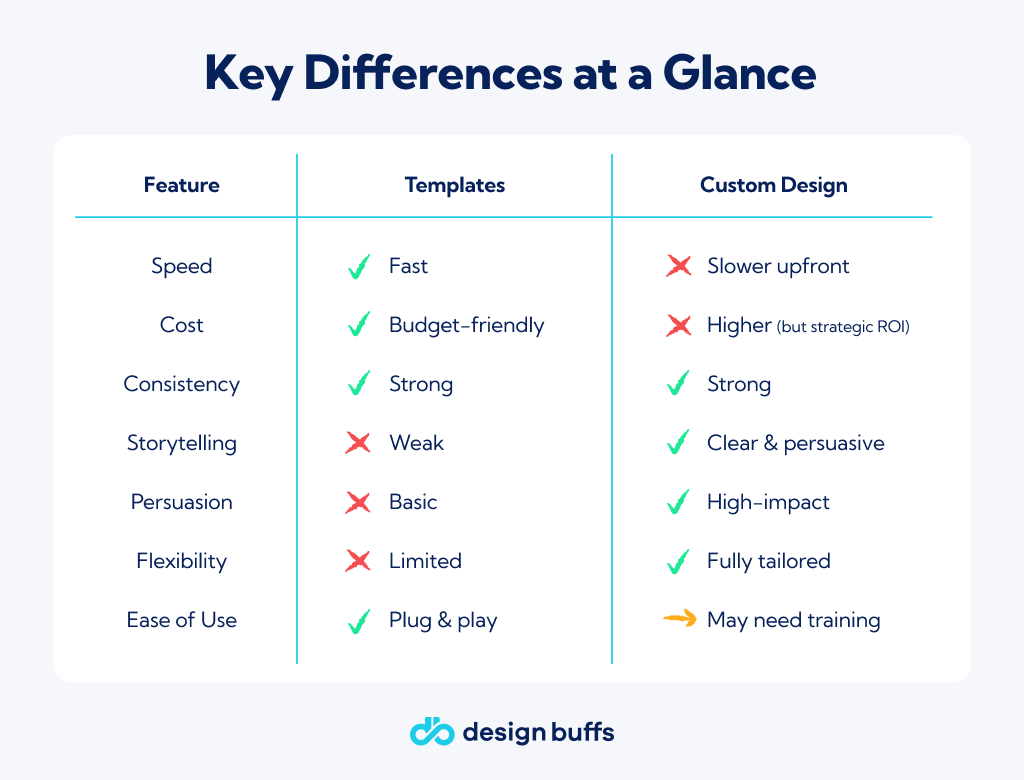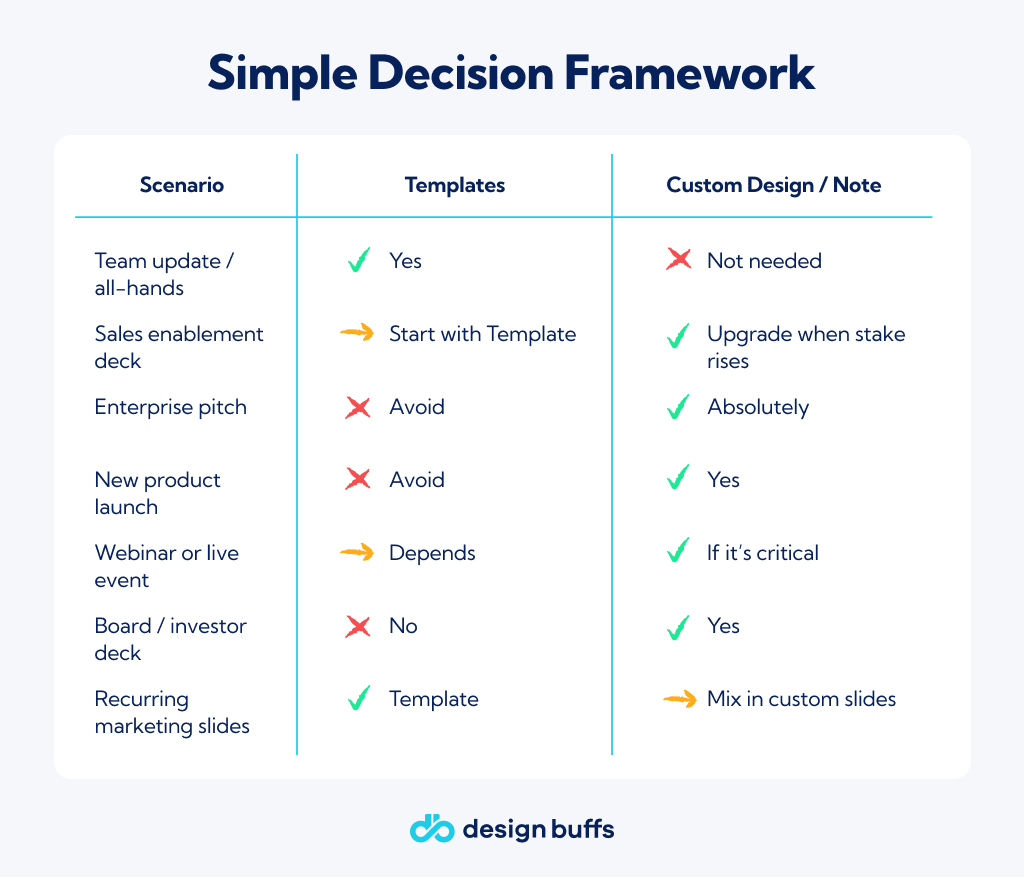Should You Use a Presentation Template or Invest in Custom Design?
If you're creating pitch decks, sales enablement materials, or webinars at scale, you've likely asked:
"Should we just use a template… or bring in proper design help?"
It's a fair question—and one that every marketing, product, and sales team inevitably encounters.
You're under pressure to move quickly, stay on-brand, and make every presentation impactful, without blowing your budget or slowing down your team.
Here's the truth: templates and custom designs both play a role. But knowing **when to use each one—and why—**is what separates average teams from those that consistently convert, close, and grow.
Let's break it down.
1. The Case for Presentation Templates
Templates are fast, scalable, and cost-effective. They're your go-to when speed and consistency are more critical than nuance or persuasion.
✅ When Templates Make Sense
- Internal Presentations: All-hands meetings, team updates, and budget reviews. These don't need to dazzle. A clean, consistent template saves time and keeps your brand intact.
- Real-life example: A B2B SaaS company rolled out a modular presentation template for internal updates. They cut over 20 hours per month in deck creation and reduced design requests by 60%.
- Repeatable Content: Sales reports, onboarding decks, client check-ins. If it's recurring, it shouldn't be a creative reinvention every time.
- Teams with Basic Design Know-How: If your marketing or sales teams understand slide hierarchy and messaging, a well-built template can go a long way in enhancing their effectiveness.
2. Where Templates Fall Short
Templates are great for structure, but they're not built for persuasion or high-stakes storytelling.
❌ Common Pitfalls
- A generic look makes your message forgettable.
- One-size-fits-all layouts bury key insights.
- Sales reps improvise when the deck doesn't fit their flow.
- There's no feedback loop to improve performance.
Real-life example: A B2B fintech firm used the same templated pitch deck for months. Enterprise buyers didn't get it. After investing in custom design, they secured two out of their next three enterprise clients, including a $ 480,000 ARR deal.
3. When Custom Design Is Worth It
Custom isn't just about "making it pretty." It's about making it work for your audience, your story, and your goals.
💡 Invest in Custom Design If:
- You're pitching to enterprise clients or raising capital.
- You're launching a new product or rebranding.
- Your current deck isn't converting.
- You're hosting a webinar, keynote, or virtual event that needs to make a lasting impression.
Example: A health-tech scale-up approached us before their Series B funding round. Their investor deck was a wall of text with inconsistent visuals. Following a comprehensive redesign, they secured $ 22 million. One investor said, "The clarity and design made it one of the best decks we've seen this year."


6. What Should You Track?
If you're justifying the investment to leadership, focus on these:
- Sales Enablement: Are deals moving faster through the funnel?
- Engagement: Are people actually reading or asking follow-up questions?
- Time Saved: Are marketing/design teams freed up for more strategic work?
- Perception: Are you earning trust in high-stakes meetings?
One client told us: "Our old deck made us look like a $2M company. The new one made us look like a $20M company—and nothing else had changed."
7. So… Templates or Custom?
Probably both.
The most innovative teams do this:
- Use templates to scale internal comms and repeatable content.
- Invest in custom design when it counts—enterprise pitches, launches, investor decks.
- Build modular slide libraries to blend the best of both worlds.
- Partner with a design team that understands business, not just visuals.
If your presentations aren't landing, it's likely not your product—it's the story and the way you deliver it.
8. Ready to Find Out What You Actually Need?
Take 3 minutes to clarify your path:
- 🎯 Self-Assessment: Should You Stick with Templates or Go Custom?
- 🧰 Check out our presentation design services
Or, if you'd rather skip the guessing:
🚀 Start a no-fluff redesign with a clear goal
You don't need a prettier deck. You need a sharper story, built for the moments that matter.




